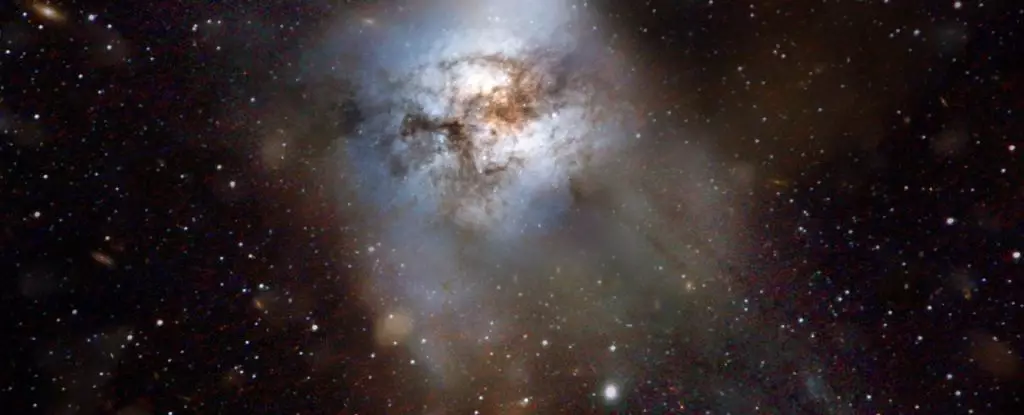The early Universe was a time of chaos and wonder, where stars ignited and galaxies collided. However, deciphering the secrets of this primordial era is no easy task. We often find ourselves stumbling upon unexpected discoveries and grappling with misconceptions. Recently, the renowned James Webb Space Telescope (JWST) unveiled a captivating case of mistaken identity that has left scientists astounded. Initially believed to be a solitary galaxy bursting with star formation, HFLS3 has turned out to be an extraordinary collision of six galaxies making their grand entrance into the cosmos. This groundbreaking revelation stems from an extensive analysis of JWST data conducted by astrophysicist Gareth Jones and his team from the University of Oxford.
HFLS3, residing in the Epoch of Reionization, caught the attention of researchers in 2013 when it was identified as a seemingly independent galaxy. The Herschel space telescope recorded an astounding star production rate of about 3,000 solar masses per year, dwarfing even our own Milky Way. This observation proved baffling, as galaxies were not believed to possess such immense sizes and rapid star-forming capabilities during the early stages of the Universe. Yet, the utilization of subsequent Hubble observations hinted at a more complex scenario, suggesting the presence of multiple galaxies hiding within the distant glow.
Equipped with state-of-the-art technology that peers into the depths of space-time with unparalleled resolution, the JWST presented an opportunity to unravel the mysteries concealed within HFLS3. In September 2022, the JWST’s near-infrared NIRSpec instrument captured invaluable observations of the specific region in which HFLS3 can be found. Jones and his team embarked on a rigorous analysis of this data, determined to pierce through the veils of deception and discern the truth.
After meticulous analysis, the team processed the data and scrutinized the way light had traveled across the vast expanse of the Universe. To their astonishment, they discerned signs of distinct galaxies within HFLS3—six galaxies, to be exact. Confined within a compact volume of space with a diameter of merely 36,000 light-years, HFLS3 showcased three pairs of small galaxies engaged in a celestial ballet leading to an inevitable collision. This cosmic spectacle would have occurred within a billion years of the initial observation, an astonishingly short timeframe for such an epic intergalactic collision. The proximity of these galaxies intensifies their gravitational interactions, rousing their reservoir of star-forming elements and sparking a raging inferno of new star formation. Consequently, this provides a plausible explanation for the previously incomprehensible high rate of star birth witnessed within HFLS3.
This extraordinary discovery grants us a captivating snapshot into the dynamics of galactic interaction and growth during the epoch known as the Cosmic Dawn. The implications of this revelation extend beyond HFLS3 alone. The research team emphasizes the necessity for thorough investigations of this enthralling phenomenon, as well as other celestial sources. They assert that a complete reinterpretation of the HFLS3 field is warranted, challenging the notion that this celestial marvel is merely an extreme starburst. Instead, HFLS3 embodies one of the densest conglomerates of interacting star-forming galaxies within the first billion years of the Universe.
As we delve further into the mysteries of the Universe, we must remain vigilant against our preconceived notions and embrace the unexpected. HFLS3 stands as a testament to the ever-evolving nature of our understanding. What once appeared as a solitary galaxy has unraveled to be a mesmerizing confluence of galaxies embarking on a cosmic collision. With each new revelation, the intricacies of the early Universe come into sharper focus, allowing us to catch glimpses of its magnificent symphony. The study of HFLS3 serves as a reminder that even the most powerful telescopes can deceive, compelling us to approach the cosmos with an open mind and unyielding curiosity.


Leave a Reply